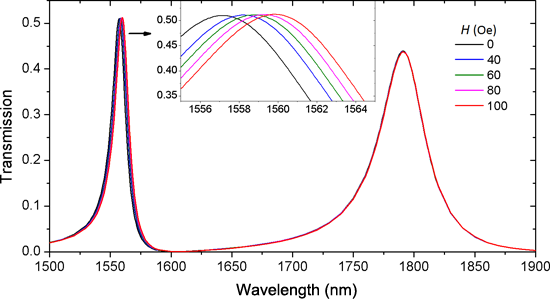Search results
Search for "magnetic field sensors" in Full Text gives 6 result(s) in Beilstein Journal of Nanotechnology.
Relation between thickness, crystallite size and magnetoresistance of nanostructured La1−xSrxMnyO3±δ films for magnetic field sensors
Beilstein J. Nanotechnol. 2019, 10, 256–261, doi:10.3762/bjnano.10.24

- additional supply source of precursor solution in an exponentially decreasing manner, exhibit the highest magnetoresistance and the lowest magnetoresistance anisotropy. The possibility to use these films for the development of magnetic field sensors operating at room temperature is discussed. Keywords
- : colossal magnetoresistance; crystallites; magnetic field sensors; MOCVD growth; nanostructured films; Introduction Perovskite manganite materials are an interesting topic of research since they can be applied as sensors for measuring the magnetic field due to the colossal magnetoresistance (CMR
- of crystallite dimensions. As a result, an increase in the magnetoresistance and reduction of magnetoresistance anisotropy is achieved, which is technologically important for the production of magnetic field sensors. Experimental The nanostructured LSMO films were grown on ceramic Al2O3 substrates by
Magnetic-field sensor with self-reference characteristic based on a magnetic fluid and independent plasmonic dual resonances
Beilstein J. Nanotechnol. 2019, 10, 247–255, doi:10.3762/bjnano.10.23

- the change of environmental conditions are one of the most important devices in optical communication. Optical sensors are obtained by monitoring the change of optical properties based on, e.g., thermo-optic, electro-optic, and magneto-optic effects. In the area of magnetic-field sensors, magnetic
- , such as tunable optical filters [7], optical switches [8], modulators [9] and optical sensors [10]. In particular, optical-fiber magnetic sensors have been developed by combining MFs with optical-fiber technology [11][12][13][14][15]. Optical-fiber magnetic-field sensors have the advantages of easy
Alternating current magnetic susceptibility of a ferronematic
Beilstein J. Nanotechnol. 2017, 8, 2515–2520, doi:10.3762/bjnano.8.251

- saturation can be increased by about two orders of magnitude. This finding paves a way to application possibilities, such as low magnetic field sensors, or basic logical elements for information storage. Keywords: ac magnetic susceptibility; ferronematics; magnetic particles; Introduction The great
Towards molecular spintronics
Beilstein J. Nanotechnol. 2017, 8, 2464–2466, doi:10.3762/bjnano.8.245

- applications. Horizontally stacked two-terminal and four-terminal devices photo sensors and magnetic field sensors were developed for large-scale integration purposes. This complex research and development chain required various synthesis methods and theoretical approaches for prediction of molecular and
Magnetic properties of self-organized Co dimer nanolines on Si/Ag(110)
Beilstein J. Nanotechnol. 2015, 6, 777–784, doi:10.3762/bjnano.6.80

- complex interplay between kinetics and thermodynamics. The last twenty years have seen an unprecedented rise in the interest in magnetic nanostructures. Besides the interest to potential technological applications, such as magnetic field sensors or magnetic data storage, numerous studies have been devoted
Designing magnetic superlattices that are composed of single domain nanomagnets
Beilstein J. Nanotechnol. 2014, 5, 956–963, doi:10.3762/bjnano.5.109

- excellent room temperature magnetoresistance properties. Indeed, these bromide alloys are prime candidates for creating functional magnetic field sensors and magnetic random access memory devices. Recent work has even focused on controlling the nucleation and propagation of topological magnetic solitons



























